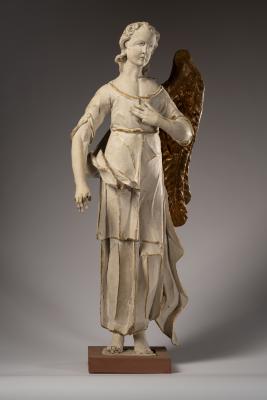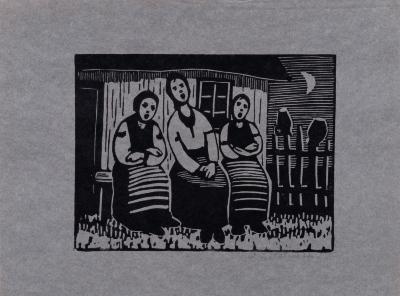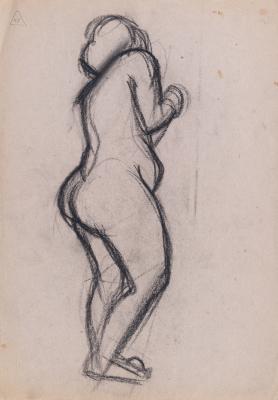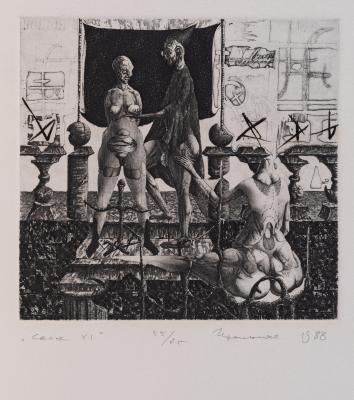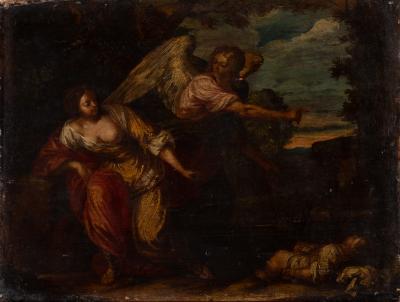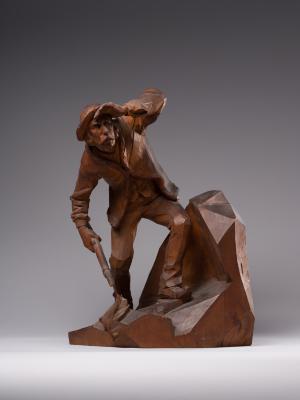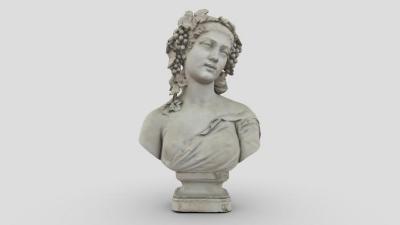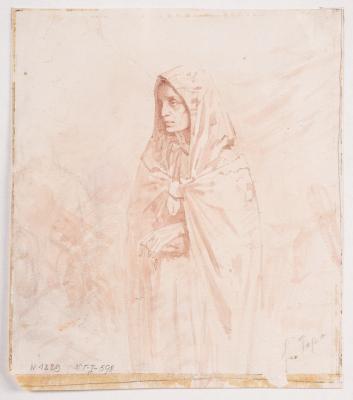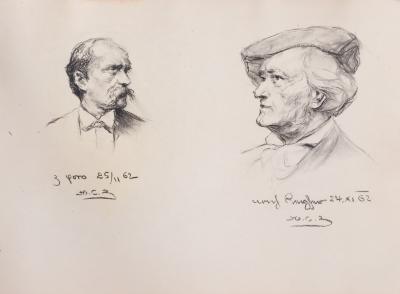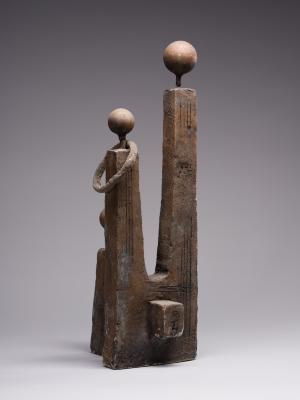The composition is known in a version of 1816, which was issued in the album Raccolta di Cinquanta Costumi li più interessanti delle città, terre e paesi in provincie diverse del Regno di Napoli (Collection of Fifty Most Interesting Picturesque Costumes from Cities, Towns, and Villages of Different Provinces of the Kingdom of Naples) published by Giovanni Scudellari in Rome in 1817. The work was based on "The Woman from Venafro", painted in gouache by the Neapolitan artist Alessandro d'Anna in 1794. Alessandro d'Anna died in 1810, and his works became available to Bartolomeo Pinelli. The artist used the composition of the work by the Neapolitan painter as a basis. However, he depicted the figure of a woman in national clothing with a barrel on her head more dynamic and mobile. The composition shows a steep slope with a tree in the foreground on the right. This element is often used in many other works by B. Pinelli. The crowns of the other two trees create a horizontal rhythm and, accordingly, complement the visual effect of the woman's pace from right to left down from the mountain peak. The artist accentuated the woman's figure with the help of bright green, blue, and yellow colours. Present-day Venafro is a municipality bordering the provinces of Lazio, Molise, and Campania. In the early nineteenth century, the city was part of the province of Terra di Lavoro. It is located near the main ridge of the Apennines. Conca Casale is a comune in a high-mountain valley north of Venafro.










